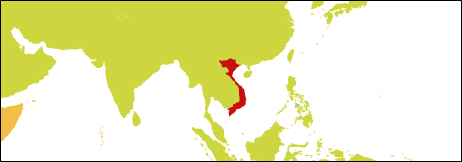Results: within the World Cities project, the following exchange sessions took place:
- Kick-off event in Hanoi and visit to HCMC (June 2017)
- Follow-up visit of Vietnamese cities to the EU (November 2017)
- Closing session in Hanoi (February 2018)
Background:
With a population of 95 million people, living in 64 provinces and 5 cities with a total area of 329,314 square km (approx. the size of Germany), Vietnam is one of the most densely populated countries in the world. During recent decades, cities in Vietnam became the engines of economic development and rapid urbanisation has been the consequence.
Vietnam’s urbanization had been in a similar stage to China, India, and Indonesia until late 1970s, but then it slowed down as China and Indonesia were increasing urbanization and economic growth. Recently, on account of Doi Moi reforms and export-oriented industrialization policies, Vietnam’s urbanization also started accelerating. Since urbanization in Vietnam has been accelerating recently, a UN projection suggests that the urban population will exceed the rural population by 2040 (United Nations, 2008).
According to the UN Habitat, 1 to 1.3 million people will be added to urban areas each year until 2020. The current urbanisation rate of 27 % today is expected to increase to 45% in 2020. The country has been exposed to the negative impacts of urbanisation such as traffic congestions, accidents, poor provision of services and service delivery and environmental pollution.
According to the World Bank[1], Vietnam has developed two independent and dominant core-periphery urban systems: Ho Chi Minh City and Hanoi. Vietnam’s rapid economic growth is driven by these two urban systems with high growth and industrial concentration within these cities and their surrounding areas. This development – which is consistent with the experience of other rapidly developing countries in incipient or intermediate stages of urbanization – triggers territorial disparity in the country.
Governance
Although there are tangible results in improving the relations between local authorities and the population, urbanization and the Urban Development challenges still directly or indirectly affects the life of many Vietnamese Citizens. Nearly all inhabitants in a municipality will profit or suffer from decisions in local development planning on priorities in land use, public infrastructure investment and the establishment, upgrading or reallocation of basic infrastructure and a very high number of citizens are direct targets and often victims from decisions on land use in urban areas where fast economic development growing traffic and migration from rural areas force the local administrations to continuously develop and change their land use plans. This missing involvement of the people in planning processes lead to mistrust of the local population and complicate the relations between the citizens and the city administration at a later stage.
Regarding housing, Vietnamese cities have managed to enable a pluralistic supply of housing to meet the needs of different segments. It seems that much of the demand for housing in Vietnam, especially for low income groups, is and will be met in the following ways. However, as a lower-income and rapidly urbanizing country, Vietnam has very few urban slums.
When it comes to mobility, Vietnam’s cities still enjoy relatively good urban mobility, due in large part to the following features.
- The nearly universal use of the motorcycles as the primary means of transportation;
- The characteristic mixed land use neighbourhoods of Vietnamese cities (which result in the close proximity of many of the day-to-day trips individuals typically make).
- The prevalence of shop-houses, where many people live in the space above or behind their stores.
However, this picture is changing rapidly with the increase in the usage of cars in cities. The logistical infrastructure of the largest cities of Hanoi and HCMC are not capable of sustaining extended use of motor-cars as the major means of transportation.
Best Practice: The EUs’ DELGOSEA programme
The “Partnership for Democratic Local Governance in Southeast-Asia (DELGOSEA)” originated in a EU project ran between 2010-2012. The project created a network of Local Government Associations (LGAs), local authorities, non-government organizations and academic institutions in the Philippines, Indonesia, Vietnam, Thailand and Cambodia, focusing on transnational exchange of sustainable good governance practices in four main areas: people’s participation in planning and decision-making; institutional governance; urban environment; and fiscal management and investment promotion strategies. The project was managed by the Delegation of the European Union to Indonesia and Brunei Darussalam.
Source: DELGOSEA
[1] This section has been compiled from several resources including the World Bank’s Vietnam Urbanization Review (2011).
